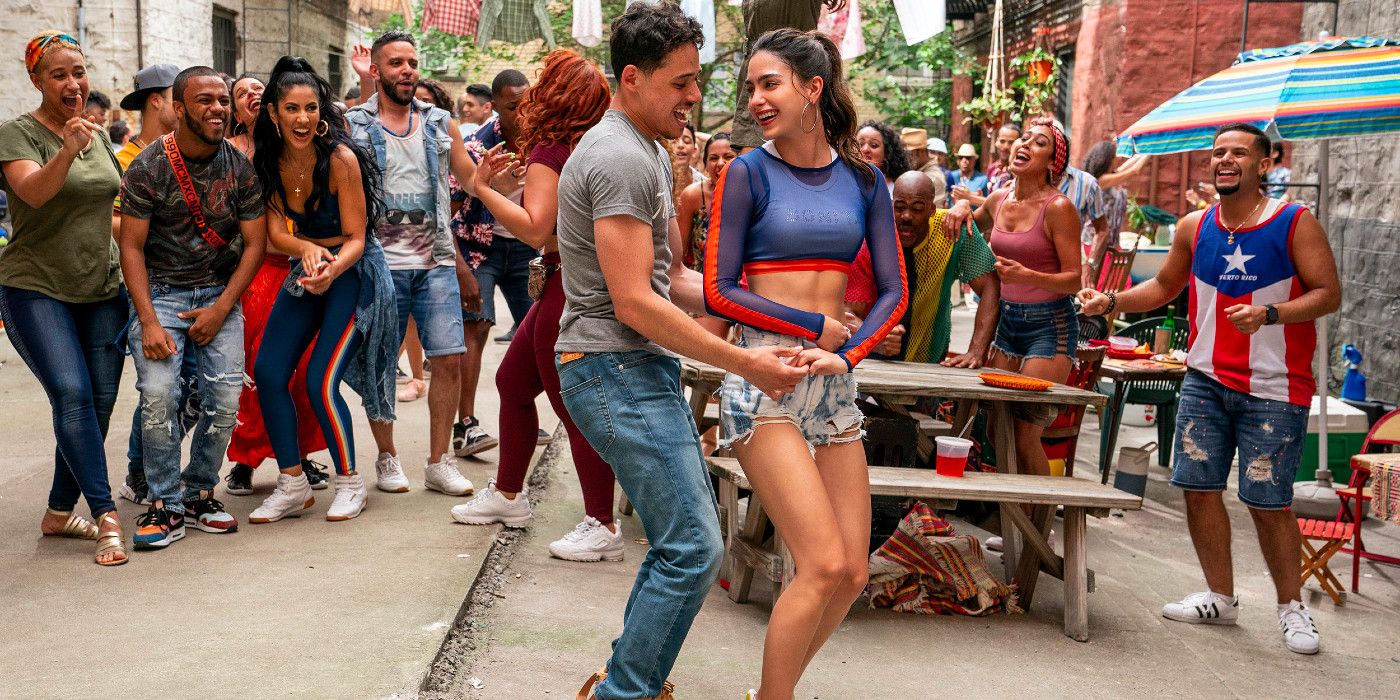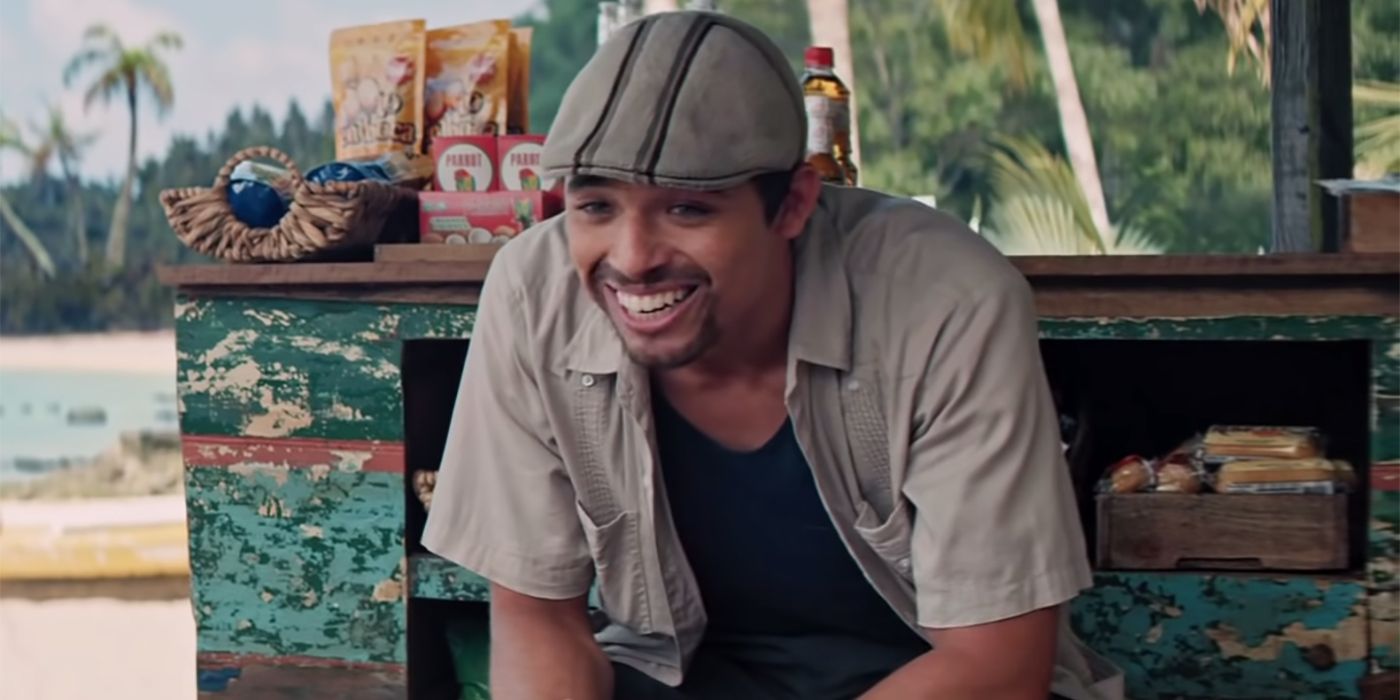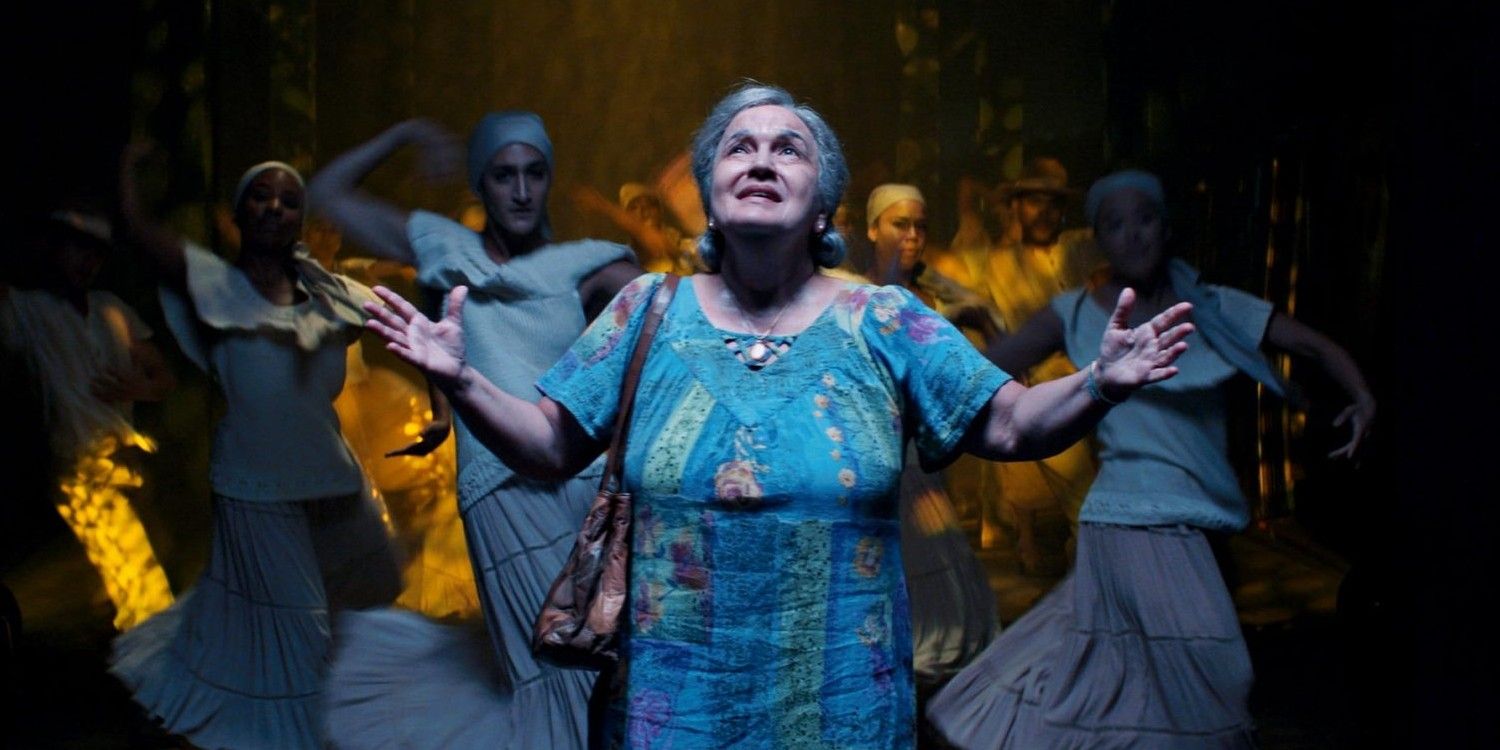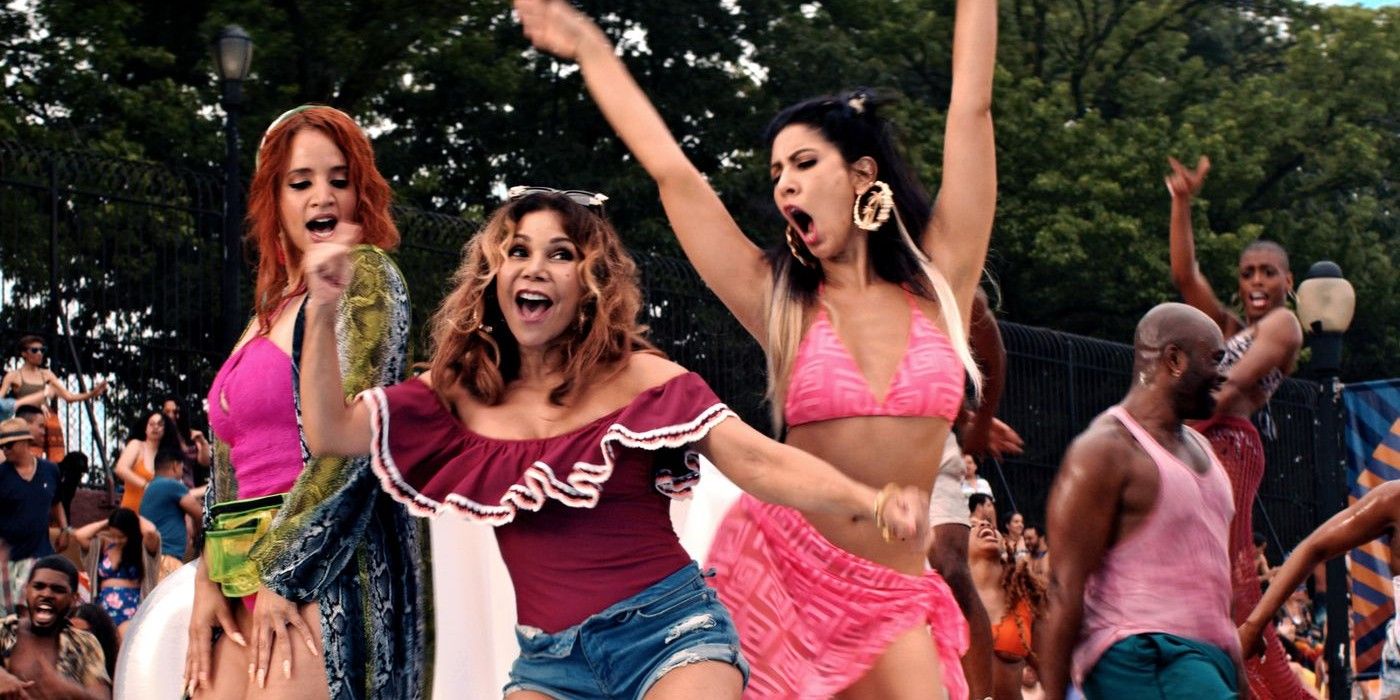WARNING: The following contains spoilers for In the Heights, now in theaters and streaming on HBO Max.
The long awaited adaptation of Lin-Manuel Miranda's Tony-winning musical, In the Heights, hit theaters and HBO Max this week after a year's delay. While the vibe is identical to the original stage production, the material has still undergone some drastic changes in its transition from the stage to the screen, some of which improve upon the stage version, while others don't. These are the major differences between the stage show, which premiered in 2005 and hit Broadway in 2008, and the movie, which was filmed in the summer of 2019 and is intended to be contemporary.
The Movie Has a Framing Device
The stage production begins as Usnavi opens his family's bodega for business at the crack of dawn. His parents, who emigrated from the Dominican Republic to New York when he was a baby, have since passed on, and as Usnavi, nearing 30, dreams of returning to his ancestral home. The events depicted in the Broadway musical take place over just three days, and while Usnavi's decision (to skip his flight back to the DR and stay in Washington Heights to run the bodega) is the same, there is no flash forward to show how things turned out in the long run.
It's not uncommon for musical adaptations to add a framing device. Chicago turns several musical numbers into Roxie's fantasy. Disney's live-action remake of Aladdin uses the exact same bookends as In the Heights, with a character telling the story of the movie to rapt children, at least one of which turns out to be their offspring with the woman from the story he's telling. In this case, the framing is pretty manipulative. For most of the movie, Usnavi orates from what looks like his dad's old DR cantina. He remembers it, because he lived and worked there until he was eight. The kids are sitting in the sand as crystal blue waves crash behind them. The movie wants the audience to assume Usnavi bought the bar and got on that plane, but then the beachy scenery is revealed to be a mural in the bodega. It's nice, if not necessary, for the audience to know that Usnavi and his crush, Vanessa, stayed together and had a daughter. Ultimately, the film's ending is cute, but less elegant than the stage show's.
The Rosario Family's Dynamic Is Drastically Altered
The somewhat loosely woven plot of In the Heights follows two main threads: the romance between Usnavi and Vanessa and the one between Benny and Nina. The four characters' ambitions -- which are all at odds with each other -- complicate things, but In the Heights is primarily a double love story. On stage, both relationships are given equal weight, and Nina and Benny's plot is arguably the more interesting of the two. That's because the reluctant college student and the cute guy who works for her dad's car service have much more of a Romeo and Juliet storyline.
Kevin Rosario, Nina's father, actively disapproves of their relationship in the musical. He views hardworking Benny as beneath her, and worries he's part of the reason her grades slipped. Kevin also has a much more contentious relationship with his daughter. There are subtle allusions to the kinds of biases that exist in neighborhoods of mixed ethnicity and income status, which imbue all the characters involved in this plotline with more nuance. In the film, Nina doesn't want to go back to school because of the racism she's experienced and the guilt she has over her dad's decision to sell half of his business to pay her tuition. But the most drastic change is to Nina's mother, Camila. In the stage version, she's alive and well, and she helps to diffuse some of the tension between Kevin and Nina, who are similarly dramatic and stubborn. The film kills her off and cuts her song, and without anyone to mediate, there's no real drama surrounding Kevin, Nina and Benny, who all seem to get along just fine and resolve their problems in the course of a few polite conversations.
The Winning Lottery Ticket Plays Out Differently
In the stage production as well as the movie, the lives of the characters hinge on two instances of happenstance. First, a blackout renders an already sweltering hot few days even more unbearable, and in the immediate aftermath, it separates the main characters from each other and creates a sense of danger. Of more consequence is a winning lottery ticket bought at Usnavi's shop. It's worth -- as the song goes -- "96,000." Whoever that ticket belongs to has a much better chance of having their sueñitos, or little dreams, come true.
Usnavi and the audience discover much earlier on in the musical that Abuela Claudia won the 96 grand. What had seemed like a pipe dream (in the show, he doesn't have savings and hasn't put down a deposit on anything) becomes a real possibility for Usnavi and Abuela when she suggests they use the money to relocate to the DR. The original song order puts Abuela's knockout solo, “Paciencia y Fe,” in a different context. On stage, she's evaluating the quality of life in America versus the Caribbean. In the movie, the song is a dream-state contemplation of her life just before her death. Viewers don't learn until the very end of the film that Abuela won and left the ticket to Usnavi, and he uses it all to pay for Sonny's fight to become a legal citizen. Since Sonny isn't a Dreamer in the musical (that concept is added to the film, presumably to make the story more relevant), he and Usnavi simply split the winnings and reopen the bodega with a mural of Abuela Claudia as a tribute.
In the Heights' Film Cuts, Adds and Swaps Several Details
2021's In the Heights is full of additions and subtractions, most of which are more symbolic than substantive. In the stage show, Daniela and Carla are coworkers and friends. In the film, they're romantic partners who pal around with new character, Cuca. Several other new characters are added, including a cameo by Marc Anthony as Sonny's dad. As previously mentioned, the songs appear in a different order in the musical and the movie. Five have been cut altogether, and one has been added over the end credits. Lyrics have been updated to reflect some of the changes, and some phrases have been swapped to be more appropriate for the 2020s. Manny Ramirez is now Big Papi in "Benny's Dispatch" while Donald Trump is now Tiger Woods in a reference from "96,000."
There are also fun Hamilton Easter eggs for anyone paying attention. The soundtrack plays as background muzak while a phone is on hold, and Lin-Manuel Miranda and Christopher Jackson -- who played Usnavi and Benny, then Alexander Hamilton and George Washington on Broadway -- appear here as the dueling Piragüero and Mister Softee Truck Driver.
Directed by Jon M. Chu and based on the musical by Lin-Manuel Miranda, In the Heights stars Anthony Ramos, Corey Hawkins, Leslie Grace, Melissa Berrera, Olga Merediz, Jimmy Smits, Gregory Diaz IV, Daphne Rubin-Vega, Stephanie Beatriz, Dascha Polanco and more. The film is currently in theaters and streaming on HBO Max.





